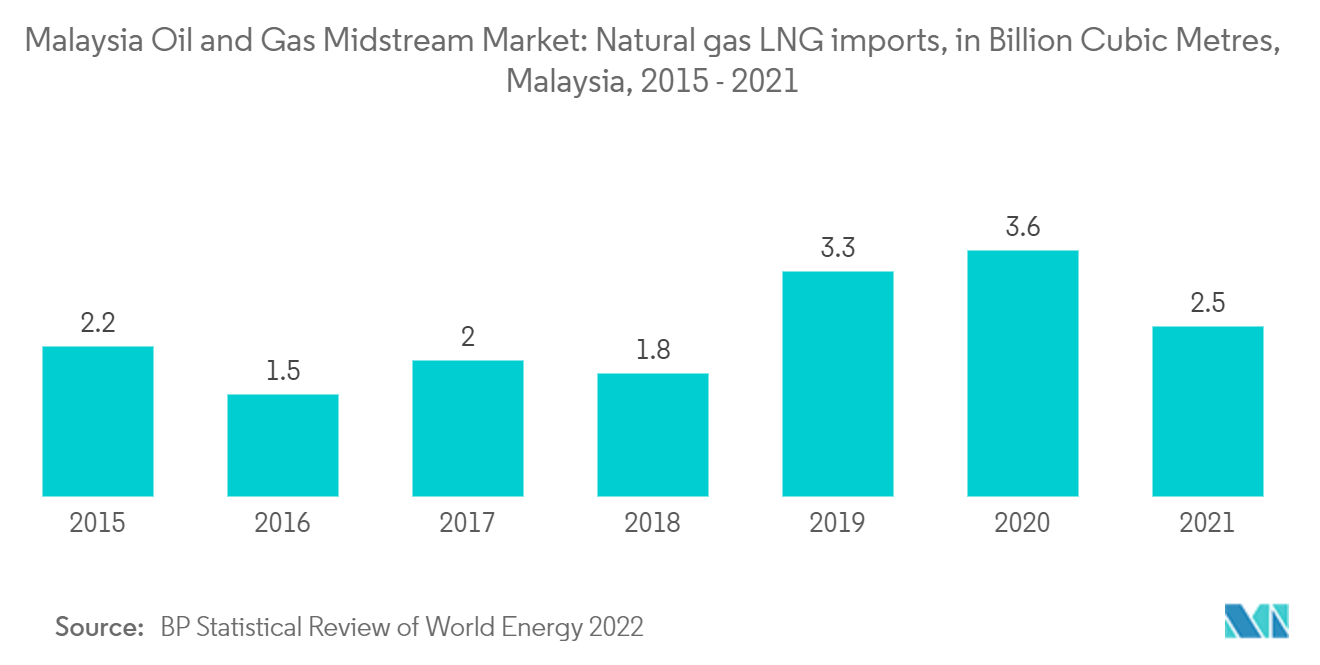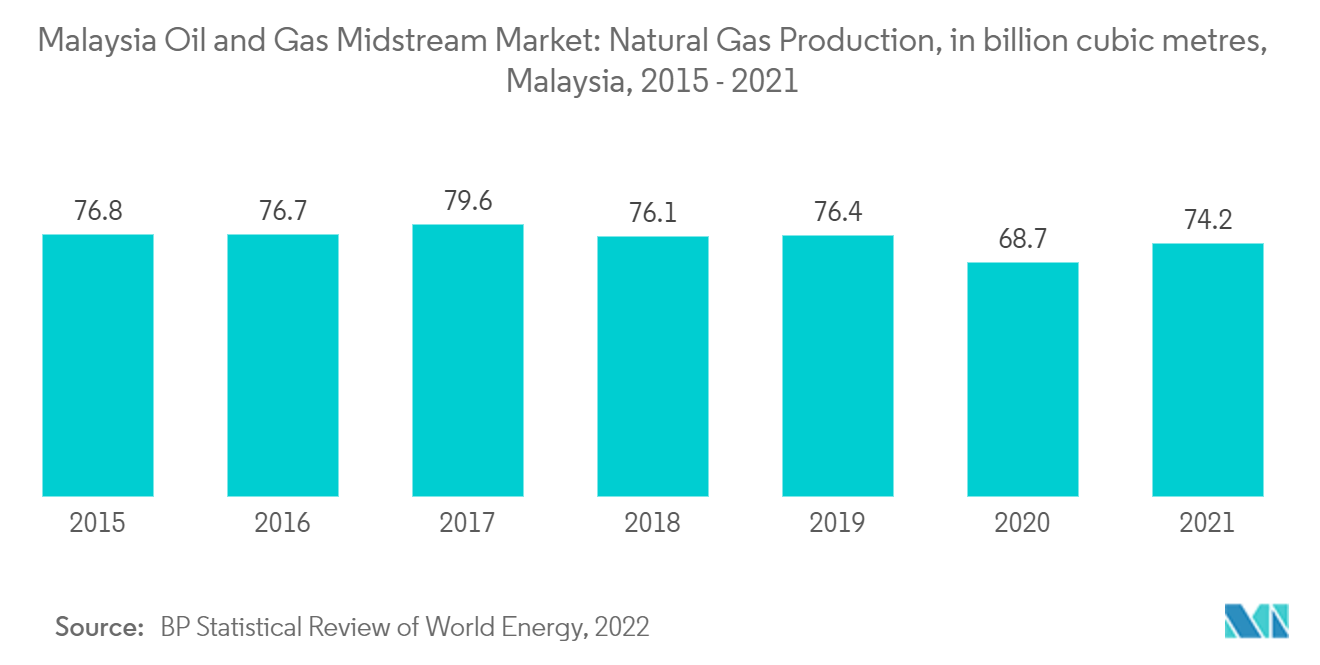Market Trends of Malaysia Oil and Gas Midstream Industry
This section covers the major market trends shaping the Malaysia Oil & Gas Midstream Market according to our research experts:
LNG Terminals Segment is Expected to Dominate the Market
- The Liquefied natural gas (LNG) terminals segment is expected to dominate the midstream market of Malaysia due to the increasing demand for natural gas in the country and neighboring regions. The majority of countries want to reduce their carbon emissions to control the air quality in the environment, which has increased the consumption of natural gas in various end-user segments.
- Satu Malaysia Terminal is an LNG terminal in Sarawak, Malaysia. It constitutes three LNG trains and has a capacity of 8.1 million metric tons per annum (MTPA). It is a part of the Malaysia LNG Complex, also known as the Petronas Bintulu LNG Complex.
- As of 2021, the natural gas imports in the country were around 2.5 billion cubic meters per day. The imports were less in 2021 compared to 2020. This decrease in imports signifies the operation of new LNG terminals.
- For instance, in January 2022, the Malaysian State of Sabah and Petronas announced plans for a two million metric tons/year (mmty) liquefied natural gas (LNG) terminal. The new facility planned for the Sipitang Oil and Gas Industrial Park is a part of Petronas's collaboration with the state to expand Sabah's distribution of cleaner energy to industrial and commercial businesses.
- Furthermore, in August 2021, the Indian Oil Corporation (IOC) entered a joint venture with Malaysia's state-run Petronas to include building liquefied natural gas (LNG) terminals, fuel retailing, and gas distribution, driving the growth of the segment.

Decreasing Production of Gas to Restrain the Market
- Malaysia heavily relies on oil and gas as its primary energy source. According to BP statistics, in 2021, the share of oil and gas in countries' primary energy consumption was close to 70%. This signifies the dependency on oil and gas in Malaysia. Although the country has been taking steps to reduce its dependency and diversify to other sources for the short term, the trend is expected to continue.
- Moreover, between 2015 to 2020, the country noticed a decline in domestic natural gas production, reducing to 68.7 billion cubic meters in 2020 compared to 76.7 billion cubic meters in 2015. However, a sharp rise was recorded in 2021 at 74.2 billion cubic meters, but the production is expected to decline in the coming years.
- Malaysia's diminishing output is due to aging fields, notably its larger resources in the shallow waters offshore of Peninsular Malaysia, which constrain the country's midstream market.
- Furthermore, Malaysia's oil pipeline network could be more modest. The country primarily relies on tankers and vehicles to transfer midstream petroleum products onshore. The pipeline transports oil products from Indonesia's Dumai oil refinery to Malaysia's Melaka oil refinery.
- As a result of lower natural gas consumption and production and a limited pipeline network, Malaysia's oil and gas midstream business is constrained. However, an increase in oil and gas consumption, as well as increased investment in the sector, is going to drive the market over the projected period.

